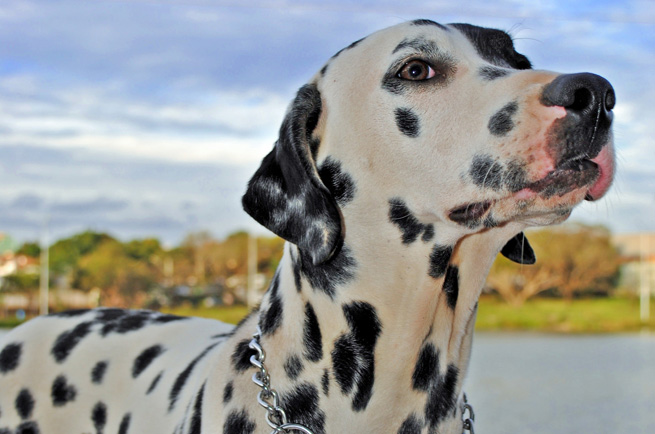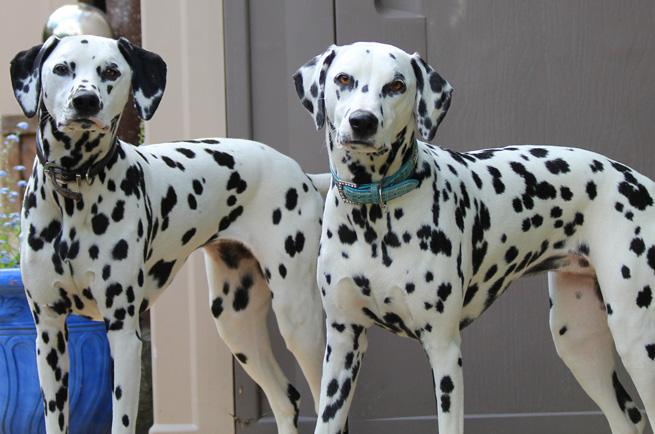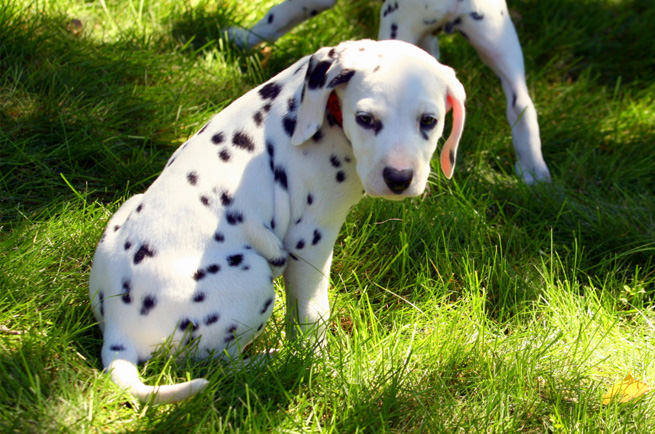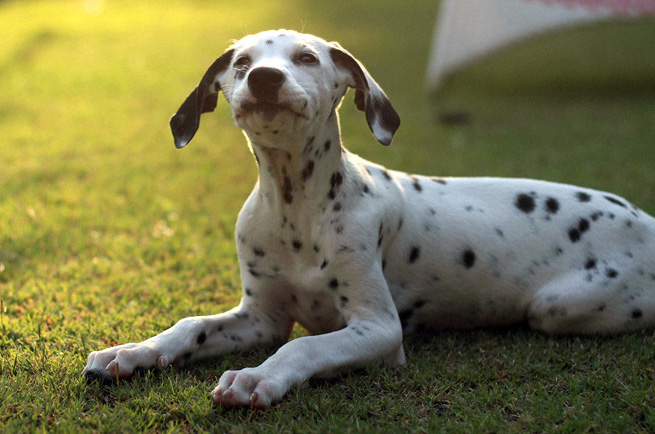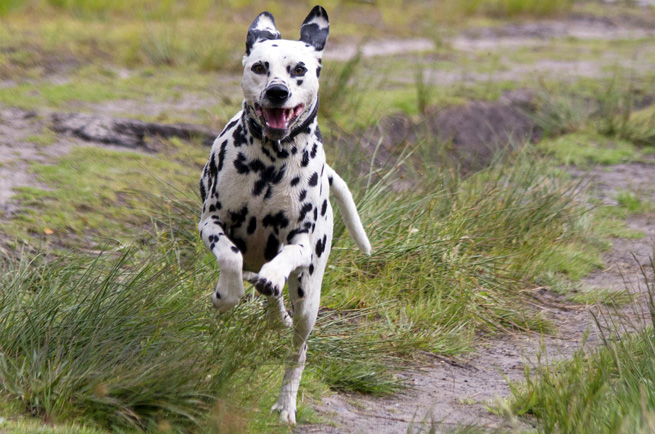Dalmatian
Made famous by the book and movie '101 Dalmatians', Dalmatians are well known for their uniquely spotty black on white coats. They are graceful dogs, standing tall and balanced with strong and muscular legs. A running Dalmatian is a sight to see with long strides and powerful movement.
Other Names
Dal
Country of Origin
Yugoslavia
Colour
Signature black or liver coloured spots on a white base coat.
Size
Large
Height / Weight
Dogs and bitches are similar in weight which is between 23 to 25kgs. Dogs' height at the withers is between 58.4 to 61cms and bitches between 55.9 to 58.4cms.
Health
Breeders have had success screening out some breeding stock, but deafness still remains an issue as does the related issue of lack of pigmentation around the eyes and nose as the dog ages. Dalmatians also tend to be prone to kidney and bladder issues and should be given plenty of opportunity to urinate as delaying an urge can aggravate this condition. There is also a risk of acquiring seizure and brain degeneration as your dog ages.
Life Span
10-12 years
Intelligence
Eager and determined dalmatians are easy to train, especially when rewarded with excessive praise! Be careful though, male dogs in particular have a dominant nature and can form bad habits easily if not kept in line.
Exercise
High
Suitability (Children)
Low
Feeding
Dalmatians are not fussy eaters.
Feeding Cost
$15-$20 p/w
Other Cost
Excercise
Perfect for an active owner. Dalmatians have a huge amount of endurance and can keep up a moderate pace almost indefinitely. Puppies will need to be given some time to develop a good muscle base like their older counterparts so care should be taken not to overexercise them early!
Hair Shed
Moderate
Ailments
Breeders have had success screening out some breeding stock, but deafness still remains an issue as does the related issue of lack of pigmentation around the eyes and nose as the dog ages. Dalmatians also tend to be prone to kidney and bladder issues and should be given plenty of opportunity to urinate as delaying an urge can aggravate this condition. There is also a risk of acquiring seizure and brain degeneration as your dog ages.
Grooming
Because of their short and hard hairs Dalmatians will not require onerous grooming and clipping. Once a week run a grooming mitt over their coats to remove dead hairs, finishing off with a soft cloth to promote shine.
Grooming Frequency
Once a week
Trimming
None
The Dalmatian has a long and prestigious history, dating back to Greek tablets showing them working on Chariots in Greece, Rome and Egypt. There is unsurprisingly also records from Dalmatia in Yugoslavia where the breed originated. Dal's are talented working dogs and have previously been used as cart pullers, sheep herders, hunting dogs, circus performers, coaching dogs, dogs of war and even border patrol! Dalmatians and horses have a special history having worked with horses from approximately the middle ages. The Dalmatian became very popular in Britain after it's introduction in the 18th Century, the aristocracy loved them as a part of the pageantry of their ornate carriages and for their ability to get along with horses. You may have seen a Dalmatian sporting a vintage fireman's helmet and in the 1800s this was because they were used to run through the streets of London, clearing the way for the carriages carrying water to put out the flames. Dalmatians maintain their special bond with horses and modern day field trials still test the abilities of the Dal to perform these duties!
comments powered by Disqus

